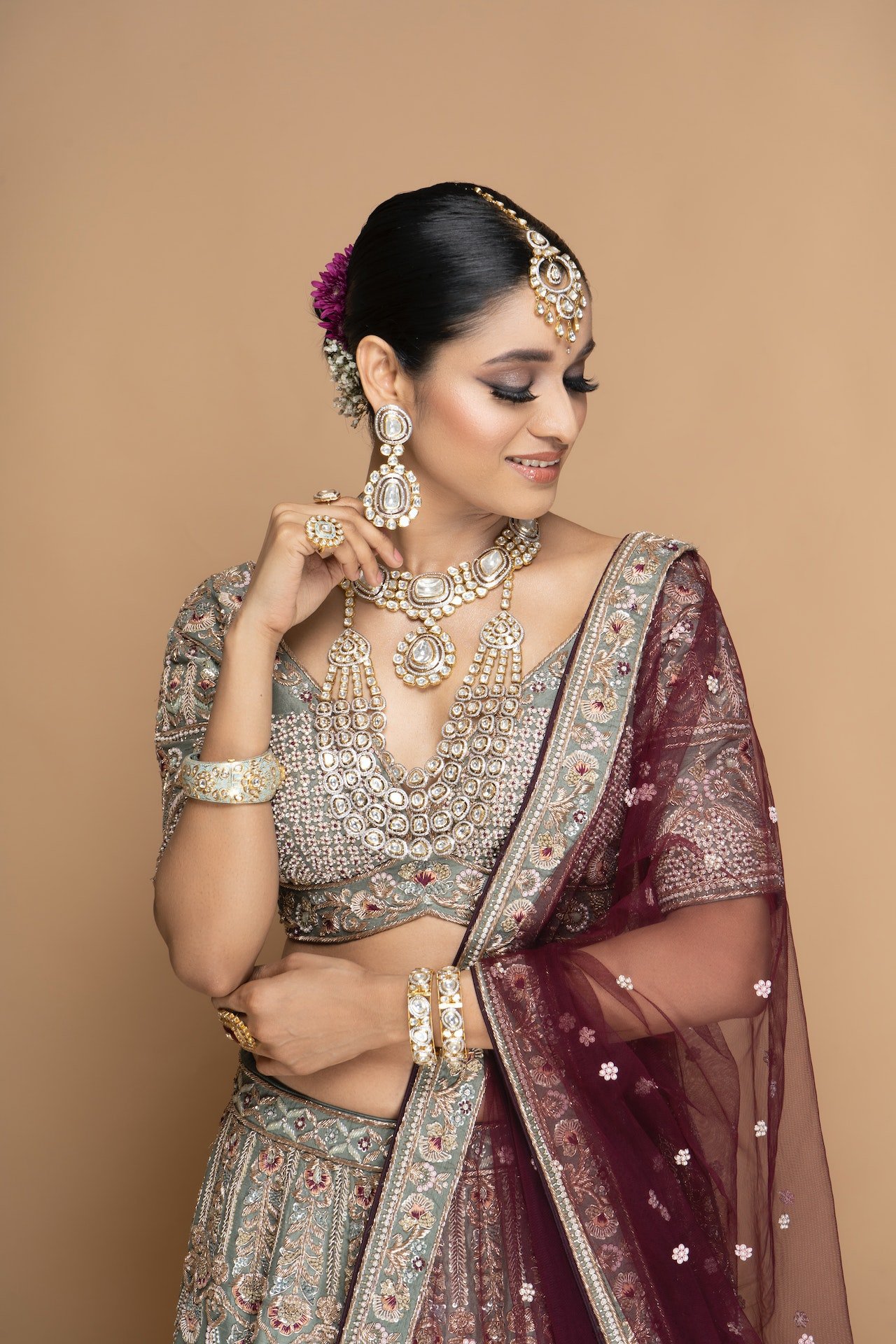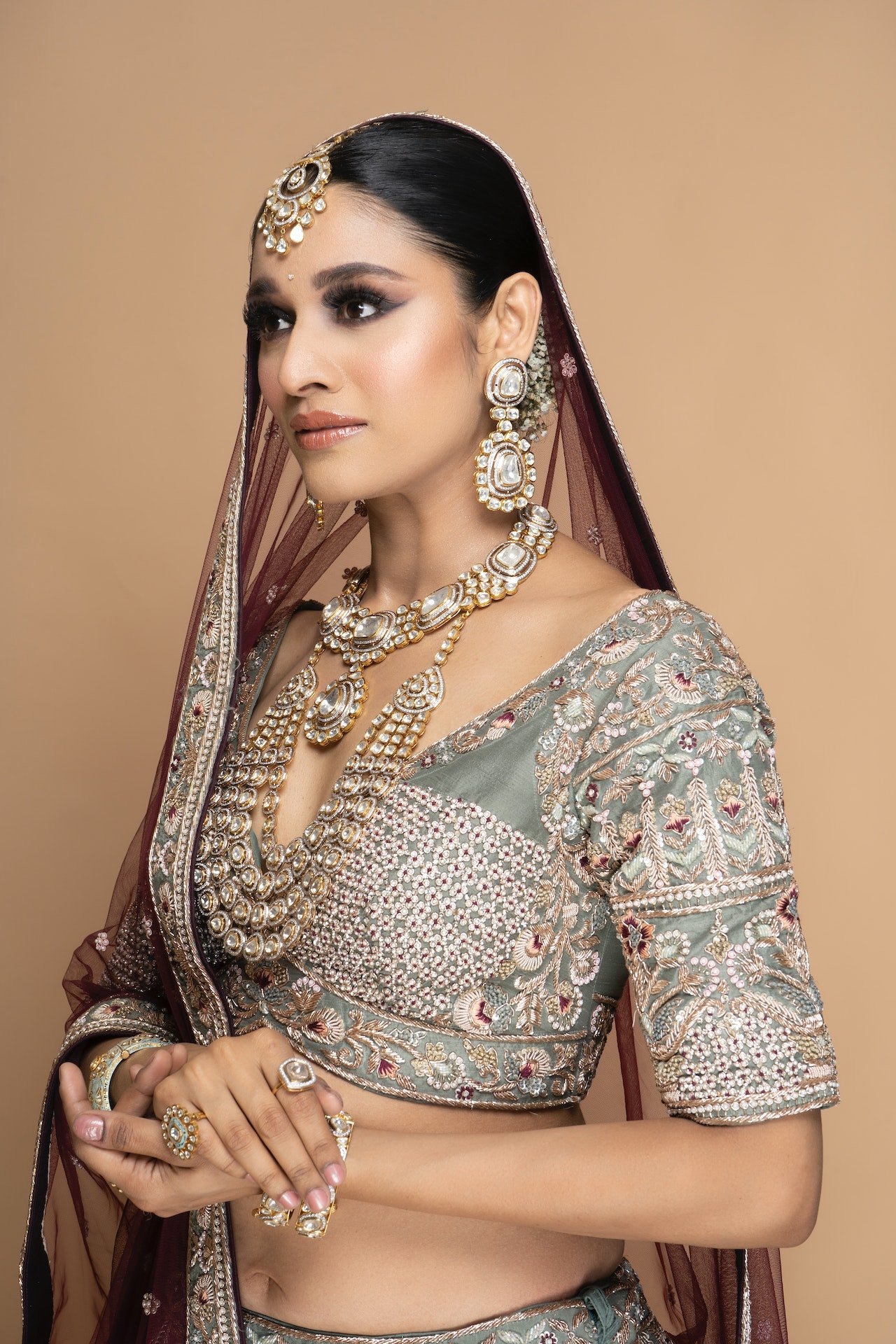What is Kundan and Polki Jewelry?
Kundan and Polki jewelry has a long, rich history in India, with references to it dating back to the Mughal era. During this time, the Mughal emperors and nobles were known to commission Kundan & Polki jewelry for themselves and their consorts. This traditional jewelry-making art has been passed down through generations of artisans ever since and continues to be an important part of the Indian handcraft’s tradition.
The word "polki" comes from Hindi and means "uncut diamond." While the Hindi word “kundan” means “highly refined pure gold”. These jewelry pieces are typically made of gold and while polki jewelry is exclusively set with uncut, natural diamonds. Kundan jewelry is primarly set with other precious gemstones such as rubies, sapphires and emeralds. The gemstones generally used in kundan and polki jewelry are not treated or enhanced in any way and are often referred to as "God's own gem" due to their natural beauty. However, it is worth noting that today it is not out of the ordinary to find kundan and polki jewelry that has used enhanced or treated natural gemstones or even lab grown diamonds. It is always important to purchase from a reputed and trusted jeweler to ensure the authenticity of your purchase.
Kundan & Polki jewelry is known for its intricate and detailed designs, which often feature filigree work, engraving, and enameling. The designs are often inspired by traditional Indian motifs such as flowers, leaves, and paisleys. Kundan & Polki jewelry is typically worn on special occasions such as weddings and festivals, and is considered to be a symbol of wealth, status, and prestige.
In the past, Kundan & Polki jewelry was primarily made by artisans in Rajasthan, India, and was highly valued and sought after. The artisans who made this jewelry were known for their skill and precision, and their work commanded high prices. Today, Kundan & Polki jewelry is still made in Rajasthan, but it is also made in other parts of India such as Gujarat and Punjab.
Kundan & Polki jewelry is typically made from gold, although it can also be made from other metals such as silver and copper. The gold used in Kundan & Polki jewelry is often alloyed with other metals to create a softer and more pliable metal, which is easier to work with. The gold is then shaped and formed into the desired design, and the gemstones are set into the metal using a technique called "kundan setting."
In kundan setting, a small hole is drilled into the metal, and a small piece of metal called a "kundan" is placed into the hole. The gemstone is then placed into the kundan and the metal is heated to fuse the gemstone to the metal. The kundan is then shaped and filed to create a secure and seamless setting for the gemstone. This technique of “kundan setting” is referred to as the Meenakari art form.
Today, Kundan & Polki jewelry has gained popularity worldwide, and it is now widely available in jewelry stores and online. The use of new materials such as glass enamel and new techniques like laser engraving has made it possible to create even more sophisticated and intricate designs often fusing traditional designs with modern contemporary western designs.
Kundan & Polki jewelry is a truly unique and beautiful art form that represents the rich cultural heritage of India. It remains a symbol of wealth, status and prestige, but it is also an expression of art and exquisite craftsmanship. It's an exquisite art form that continues to evolve and to adapt to modern times while maintaining its traditional roots.
Dive deeper into the world of jewelry
Be sure to visit the blog. Get fascinating insights straight from experts around the world and pick up secret tips to make jewelry shopping a breeze.







Beyond its aesthetic appeal, jewelry also possesses a profound ability to convey personal stories, cultural traditions, and a deep connection to one's heritage. It becomes a wearable expression of identity, allowing individuals to proudly showcase their roots. Here are a few inspiring examples of women who have used jewelry to pay homage to their cultural heritage and share it on the world stage.